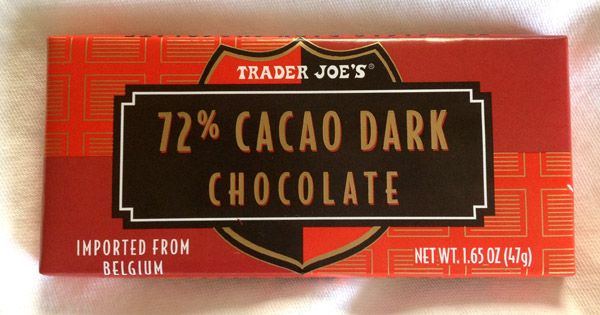
Hershey’s Special Dark Mildly Sweet Chocolate
They tested well-known brands like Dove and Hershey’s, and the company found that there were 5 companies that had chocolate bars with especially high amounts of heavy metals. This is true even if someone consumes just 1 ounce of the chocolate per day. Luckily, the company also identified safer dark chocolate options too.
Consumer Reports went by California’s laws about the maximum allowable dose of lead (0.5 micrograms) and cadmium (4.1 micrograms). The results show that there are high levels of these metals in many dark chocolates, but the report did not say whether or not they exceeded the legal limit.
The dark chocolate bars with the highest level of these metals include Trader Joe’s Dark Chocolate 72% Cacao, Hershey’s Special Dark Mildly Sweet Chocolate, Chocolove Extreme Dark Chocolate 88% Cocoa, and Hu Organix Simple Dark Chocolate 70%.
The safest bars included Taza Chocolate Organic Deliciously Dark Chocolate 70% Cacao, Ghirardelli Intense Dark Chocolate 86% Cacao, Ghirardelli Intense Dark Chocolate Twilight Delight 82%, and Mast Organic Dark Chocolate 80% Cocoa.

Trader Joe’s Dark Chocolate 72% Cacao
In fact, 23 of the bars that were tested would actually place an adult over the safe level of heavy metal consumption according to public health authorities. You might be wondering, how on earth are these heavy metals in our chocolate bars anyway?
Consumer Reports director of food and safety research James Rogers told public radio station WBUR: “With cadmium, the research has shown that if you have soil where you grow the chocolate plants in that has cadmium in it, the roots will actually draw out the cadmium and it will end up in the cocoa seeds. And then when you process those cocoa pods into chocolate, the cadmium comes along for the ride.”
It’s a similar story with lead, as Rogers continued: “When the chocolate beans, the cocoa beans, are being processed, one of the steps is for them to be dried, usually out in the open. And if you are processing these beans close to an industrial site—a place that is manufacturing lead batteries, for instance—the soil can become contaminated. And then as you’re drying these cocoa pods, they actually have dust that blows over from the industrial site and settles onto the seeds.”
These heavy metals can have an influence on child development and can have a significant impact on neurological dysfunctions. Some research has even pointed to a link between cancer and consumption of heavy metal.
Consumer Reports recommends removing any dark chocolate from children’s diets, and the same goes for any pregnant women.









